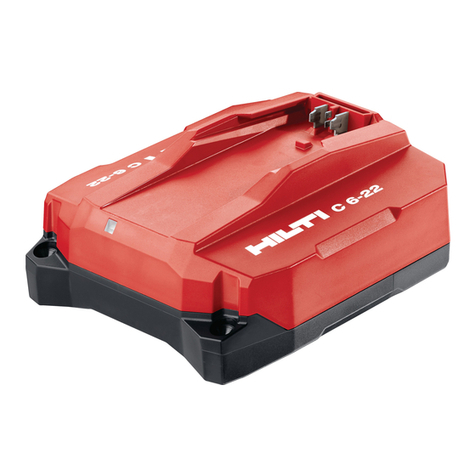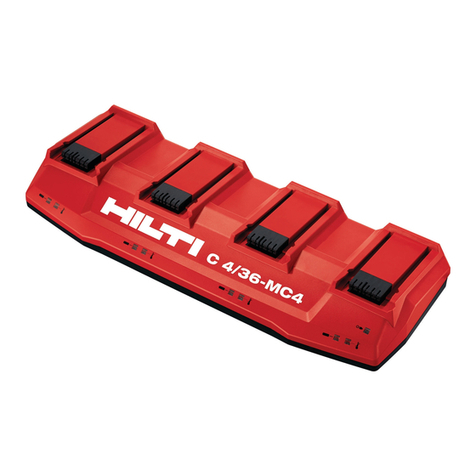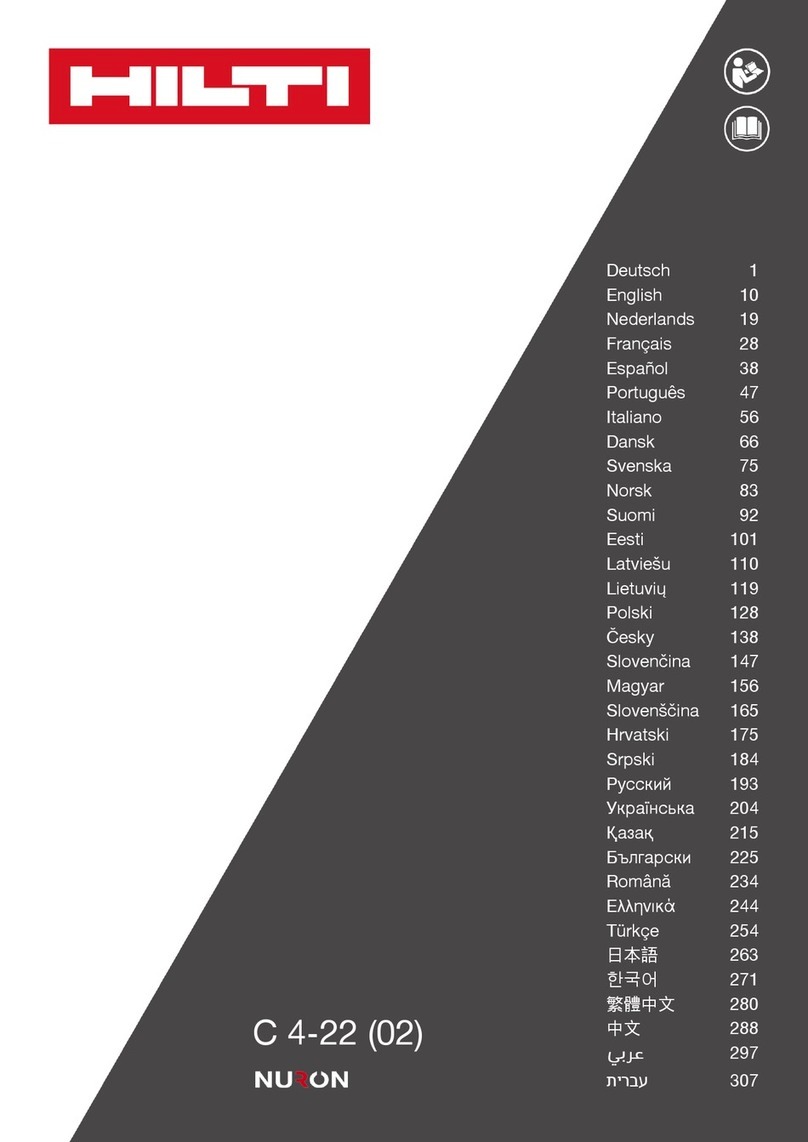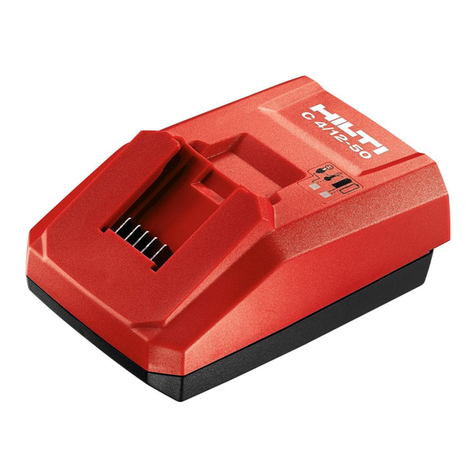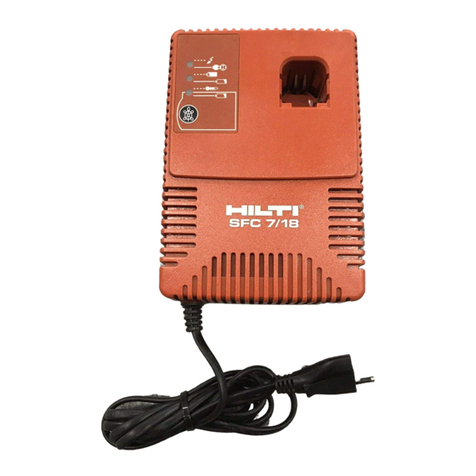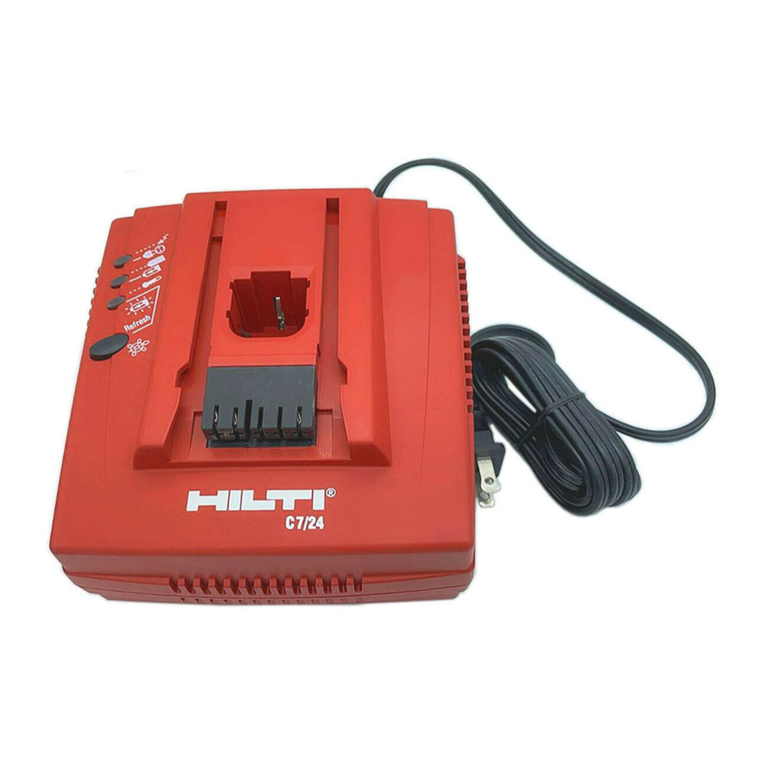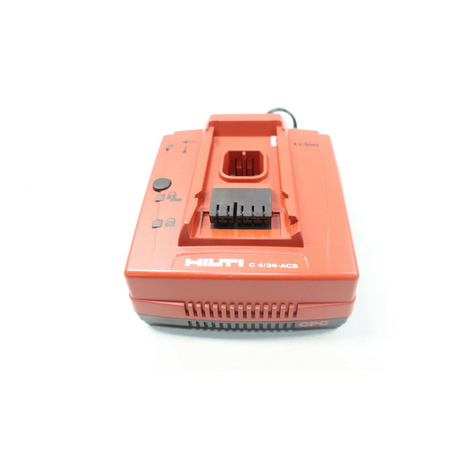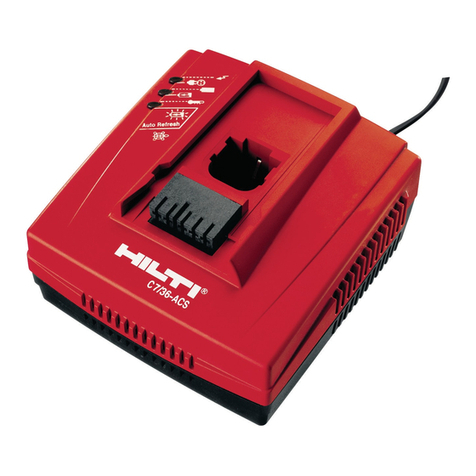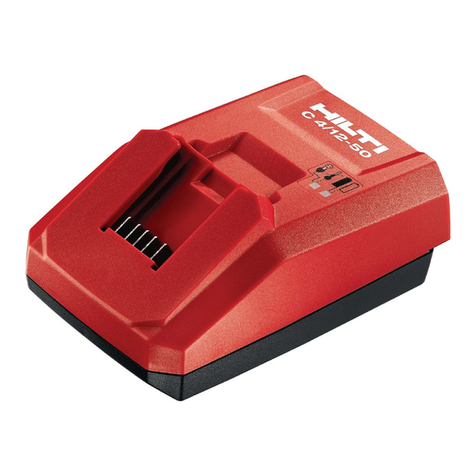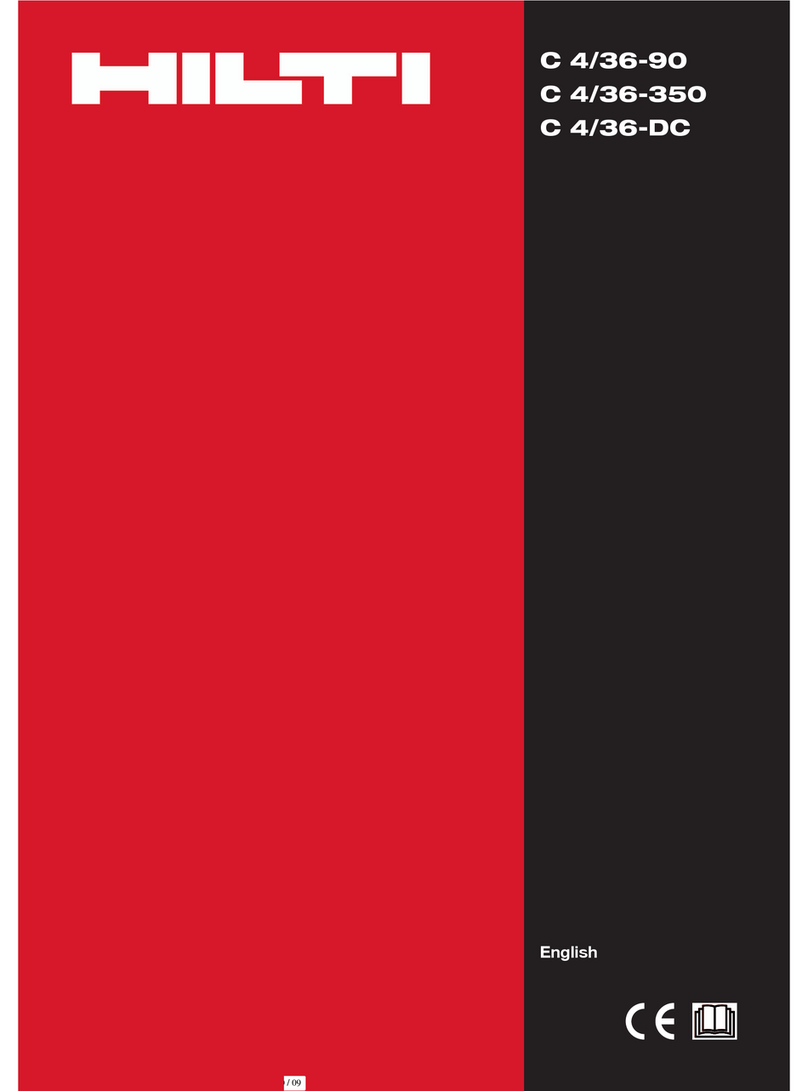Before use
f ^ l f ^ l
Ll\l Z\1 lt is essential that the safety precautions print-
ed in these operating instructions are read and observed.
f l
/\ Connect the charger to the mains supply.
- The mains voltage must corresp0nd to the infor-
mation given on the rating plate.
- All thtee indicators light brielly during lhe sell-
tesl, atter which only lhe green LED should light.
- The green LED blinks when the self-test was NOT
successful. lf, after unplugging and reconnecting
the charger to the mains supply, the self-test is still
not successful, please return the charger to a Hilti
service centre for reoair.
A]
/'\ Operale the charger only at a suitable location.
- The location for operation of the charger should
be dry, clean and cool but not exposed to frost.
- The charger must be able to give off heat during
the charging procedure. Accordingly, the ventlla-
tion slots must always be unobstructed.
0peralion
Inserling the battery
BP 6-86 for the TE 6-4:
Insert the battery in the dovetail guide and push it in
until a click is heard (engaged). E
SBP '10 for the SB 10:
SBP 1 2 for the SB 1 2:
Push the battery into the compartment as far as jt will
gOE
Take care to ensure that the battery fits correctly in the
charging compadment.
AThe charger is designed for use with the batteries
listed above. lt must not be used to charge other
batteries.
Indicators Zl
Green LED - Lights when the charger is connected
to the mains supply
- Blinks when the self-test determines a
fault in the charger or battery
Red LED - Lights when the battery is being
charged (charging in progress)
- Blinks when the battery is charged
(workinq capacitv reached)
Yellow LED - Blinks when the battery is too cold (approx.
0'C) or too hot (approx. 60"C). The
charger begins charging automatically
as soon as the battery reaches the required
remperaru re.
- Lights when the charger is operating in
conditioning charge mode.
Condilioning charge mode E
NiCd cells are subject to self-discharge. With older bat-
teries, the rate of self-discharge of some of the cells may
be higher than that of others. As conventional chargers
switch off when the first cells have reached full charge,
the other partly charged cells do not receive the full
charge. The user becomes aware of this effect in the
form of inadequate battery capacity.
This effect can be eliminated by applying a conditioning
charge. During this procedure, the charger supplies a
small current over several hours, with pauses made in
order to avoid overheating the battery. Depending on its
condition, the llattery will take 7 to 10 hours t0 reach
full charge.
The conditioning charge begins when the conditioning
mode button is pressed before insertion of the battery
and released approx. 3 seconds after the battery has
been inserted. The yellow LED lights while the battery
is being charged in conditioning mode.
The battery should be charged in conditioning mode no
more than once a month. The conditioning charge is,
so to speak, a kind of "training" for the battery. Just as
excessive training can be harmful to the human body,
t00 frequent use of conditioning charging mode can also
weaken the battery.
Baltery (accessory)
f ^ l
/\ Brforr a battery is used for the first time, it must
be charged for 24 hours in normal mode or for 1 0 hours
in conditioning mode in order to permit "forming" of the
battery cells.
-At iow temperatures: Battery performance drops at
low temperatures. Store batteries at r00m tempera-
ture when not in use.
-At high temperatures: Do n0t store batteries where
they may be subjected t0 high temperatures (e.9.
exposed to the sun, at a window, behind a car wind-
screen or on a radiator).
Never fully discharge a battery. Change the battery as
s00n as its 0erformance droos. The cells that reach a
state of total discharge first will otherwise be damaged
by the current still being drawn from the other cells.
An excepti0n to this is the BP 6-86 battery for the
TE 6-4 (this battery is equipped with an electronic deep
discharge prevention device).
